About Artemis ransomware virus
The ransomware known as Artemis ransomware is categorized as a very harmful infection, due to the amount of damage it may cause. It is possible it is your first time running into this kind of malicious program, in which case, you might be in for a big surprise. Your files might have been encrypted using powerful encryption algorithms, stopping you from accessing files. Because file decryption is not possible in all cases, not to mention the time and effort it takes to get everything back in order, ransomware is considered to be one of the most dangerous malicious software you might come across. 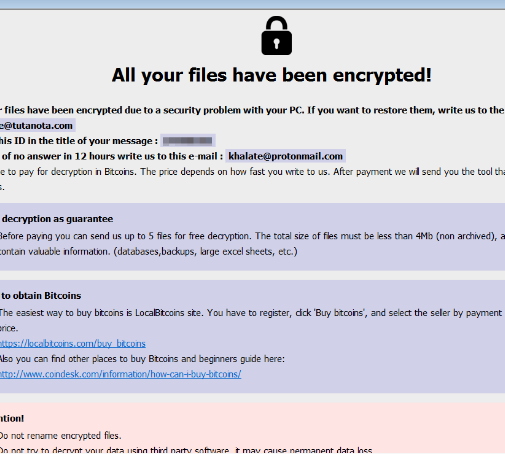
You will be given the option of paying the ransom but that isn’t the best idea. Paying will not necessarily guarantee that you’ll get your data back, so there’s a possibility that you could just be spending your money on nothing. What’s preventing crooks from just taking your money, and not giving a way to decrypt data. The future activities of these crooks would also be supported by that money. It’s already estimated that file encoding malicious program did billions worth of damage to various businesses in 2017, and that is just an estimation. Crooks also realize that they can make easy money, and the more victims give into the demands, the more attractive data encrypting malware becomes to those types of people. You may end up in this kind of situation again, so investing the requested money into backup would be wiser because data loss wouldn’t be a possibility. And you can just proceed to fix Artemis ransomware virus without problems. If you did not know what ransomware is, you may not know how it managed to get into your device, which is why carefully read the below paragraph.
Artemis ransomware distribution methods
You can commonly see ransomware attached to emails as an attachment or on questionable download websites. Since there are plenty of users who aren’t cautious about opening email attachments or downloading from sources that are less then trustworthy, ransomware spreaders don’t have to come up with ways that are more elaborate. However, some file encoding malicious software do use sophisticated methods. All crooks need to do is use a famous company name, write a convincing email, add the malware-ridden file to the email and send it to possible victims. Money related problems are a frequent topic in those emails since users take them more seriously and are more inclined to engage in. Hackers also commonly pretend to be from Amazon, and warn potential victims that there has been some unusual activity noticed in their account, which ought to immediately prompt a user to open the attachment. Be on the lookout for certain things before opening files added to emails. What is essential is to investigate whether you’re familiar with the sender before you proceed to open the attached file. Even if you know the sender, you shouldn’t rush, first investigate the email address to ensure it matches the address you know to belong to that person/company. Also, be on the look out for mistakes in grammar, which usually tend to be quite glaring. The greeting used could also be a clue, a legitimate company’s email important enough to open would use your name in the greeting, instead of a universal Customer or Member. Out-of-date software vulnerabilities might also be used by a file encoding malware to get into your computer. Software comes with weak spots that can be exploited by file encrypting malicious programs but they’re regularly patched by vendors. Nevertheless, as world wide ransomware attacks have proven, not everyone installs those updates. It’s highly crucial that you install those patches because if a weak spot is serious, Serious vulnerabilities may be used by malicious software so it’s important that all your software are updated. Updates could install automatically, if you find those alerts annoying.
How does Artemis ransomware act
Your files will be encrypted by ransomware soon after it gets into your system. Your files won’t be accessible, so even if you don’t notice the encryption process, you’ll know eventually. Files which have been encrypted will have a file extension attached to them, which assists people in identifying which ransomware specifically has infected their device. Unfortunately, it might not be possible to decode files if the data encrypting malware used powerful encryption algorithms. After the encryption process is finished, you’ll see a ransom notification, which will try to clear up what happened to your data. The method they suggest involves you buying their decryption software. If the ransom amount isn’t specifically stated, you’d have to use the given email address to contact the cyber criminals to see the amount, which might depend on the value of your files. Obviously, we don’t recommend you pay, for the previously mentioned reasons. Before you even consider paying, look into other alternatives first. It is also somewhat probably that you’ve simply forgotten that you have backed up your files. You might also be able to locate a free decryptor. If a malware specialist is able to decrypt the file encoding malicious software, a free decryption programs might be released. Look into that option and only when you are certain there’s no free decryptor, should you even consider paying. A wiser investment would be backup. If backup was created before the infection took place, you can restore data after you remove Artemis ransomware virus. In the future, avoid file encoding malicious program and you may do that by becoming aware of its distribution methods. Make sure you install up update whenever an update becomes available, you don’t randomly open email attachments, and you only download things from trustworthy sources.
Artemis ransomware removal
If the data encrypting malicious program still remains, you’ll need to get a malware removal program to terminate it. When trying to manually fix Artemis ransomware virus you could cause further damage if you aren’t cautious or knowledgeable when it comes to computers. Choosing to use an anti-malware program is a better decision. It could also stop future file encrypting malware from entering, in addition to helping you remove this one. Find a reliable tool, and once it is installed, scan your device for the the infection. We ought to mention that an anti-malware utility isn’t able to help recover files. If the ransomware is entirely gone, restore your data from where you’re keeping them stored, and if you do not have it, start using it.
Offers
Download Removal Toolto scan for Artemis ransomwareUse our recommended removal tool to scan for Artemis ransomware. Trial version of provides detection of computer threats like Artemis ransomware and assists in its removal for FREE. You can delete detected registry entries, files and processes yourself or purchase a full version.
More information about SpyWarrior and Uninstall Instructions. Please review SpyWarrior EULA and Privacy Policy. SpyWarrior scanner is free. If it detects a malware, purchase its full version to remove it.

WiperSoft Review Details WiperSoft (www.wipersoft.com) is a security tool that provides real-time security from potential threats. Nowadays, many users tend to download free software from the Intern ...
Download|more


Is MacKeeper a virus? MacKeeper is not a virus, nor is it a scam. While there are various opinions about the program on the Internet, a lot of the people who so notoriously hate the program have neve ...
Download|more


While the creators of MalwareBytes anti-malware have not been in this business for long time, they make up for it with their enthusiastic approach. Statistic from such websites like CNET shows that th ...
Download|more
Quick Menu
Step 1. Delete Artemis ransomware using Safe Mode with Networking.
Remove Artemis ransomware from Windows 7/Windows Vista/Windows XP
- Click on Start and select Shutdown.
- Choose Restart and click OK.

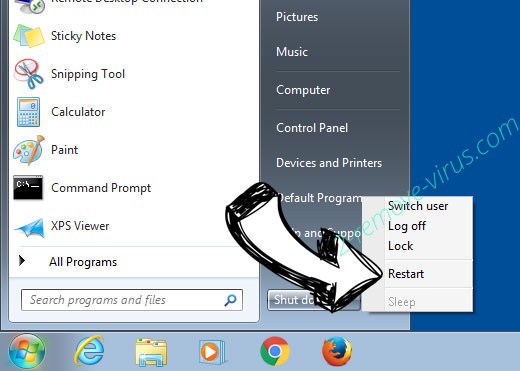
- Start tapping F8 when your PC starts loading.
- Under Advanced Boot Options, choose Safe Mode with Networking.

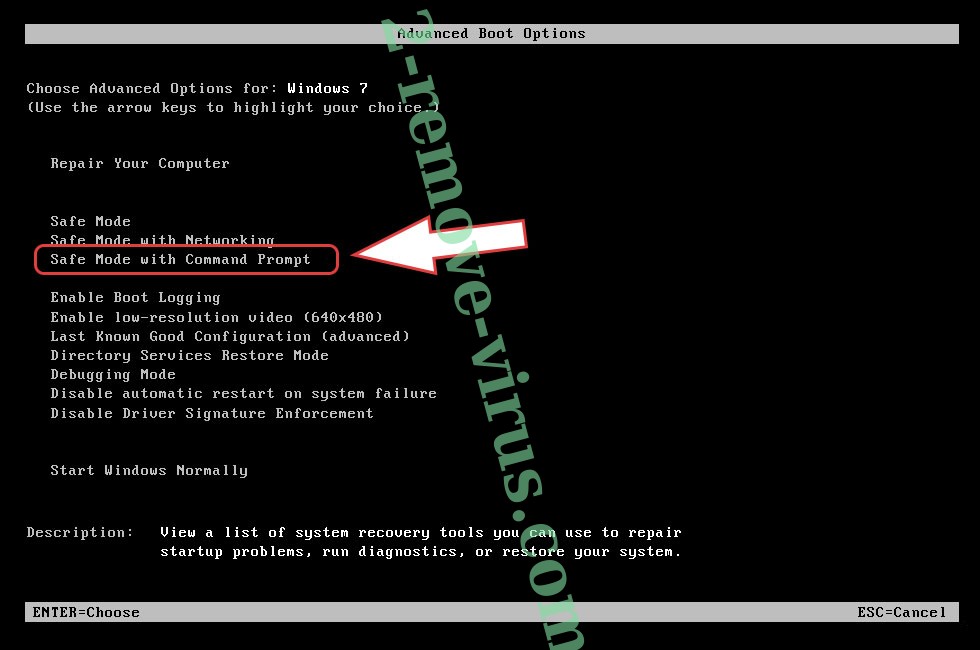
- Open your browser and download the anti-malware utility.
- Use the utility to remove Artemis ransomware
Remove Artemis ransomware from Windows 8/Windows 10
- On the Windows login screen, press the Power button.
- Tap and hold Shift and select Restart.

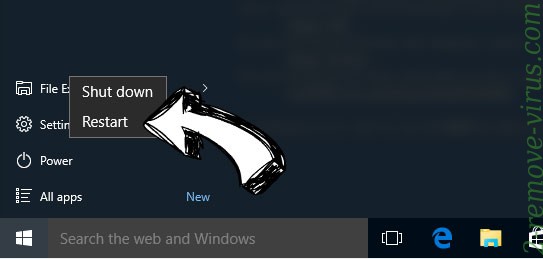
- Go to Troubleshoot → Advanced options → Start Settings.
- Choose Enable Safe Mode or Safe Mode with Networking under Startup Settings.

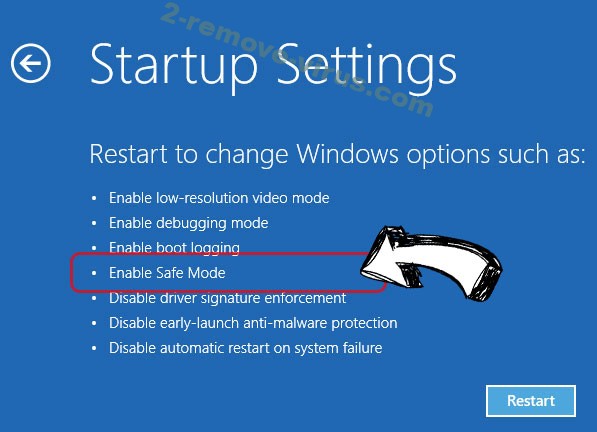
- Click Restart.
- Open your web browser and download the malware remover.
- Use the software to delete Artemis ransomware
Step 2. Restore Your Files using System Restore
Delete Artemis ransomware from Windows 7/Windows Vista/Windows XP
- Click Start and choose Shutdown.
- Select Restart and OK


- When your PC starts loading, press F8 repeatedly to open Advanced Boot Options
- Choose Command Prompt from the list.

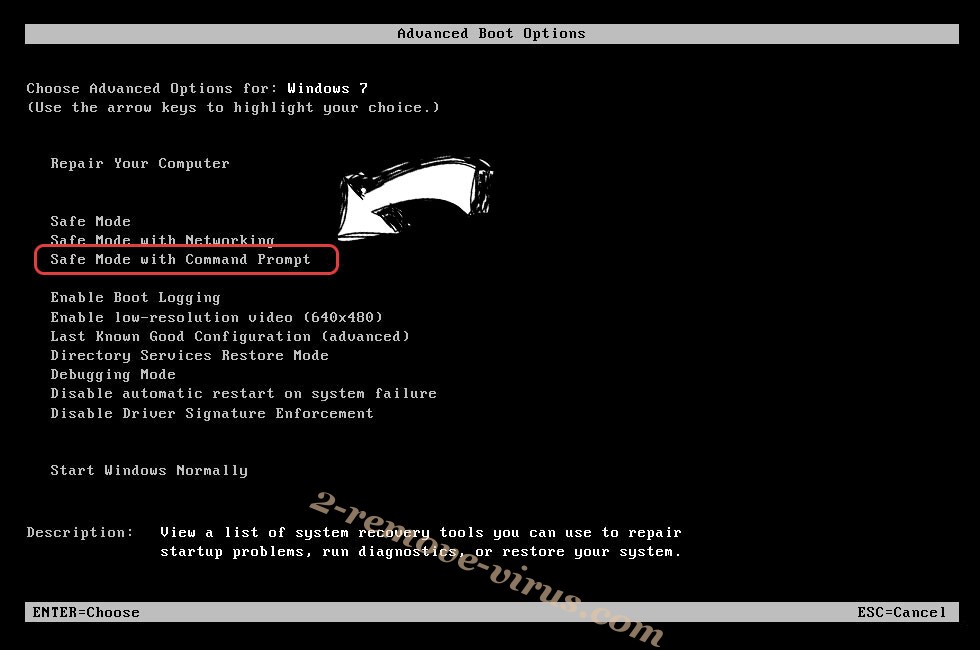
- Type in cd restore and tap Enter.


- Type in rstrui.exe and press Enter.

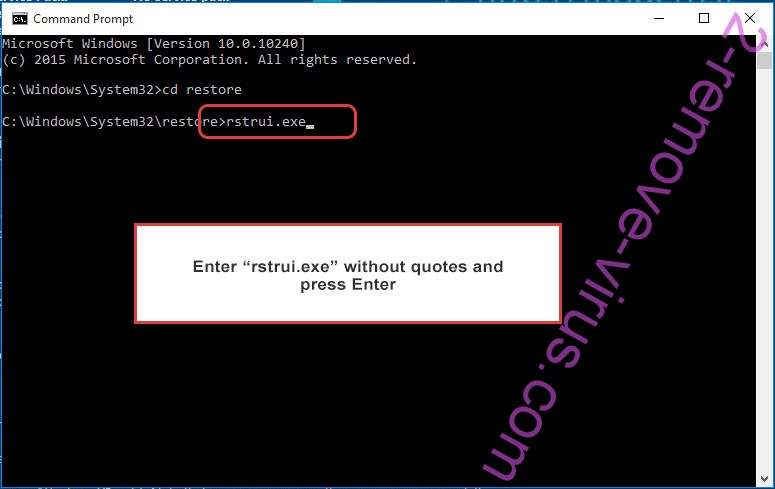
- Click Next in the new window and select the restore point prior to the infection.

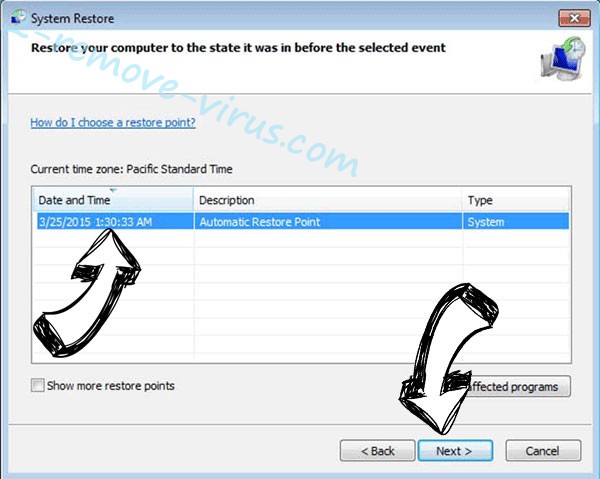
- Click Next again and click Yes to begin the system restore.

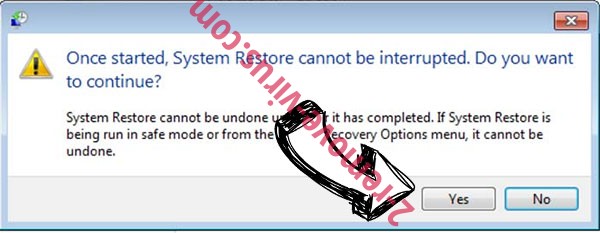
Delete Artemis ransomware from Windows 8/Windows 10
- Click the Power button on the Windows login screen.
- Press and hold Shift and click Restart.


- Choose Troubleshoot and go to Advanced options.
- Select Command Prompt and click Restart.

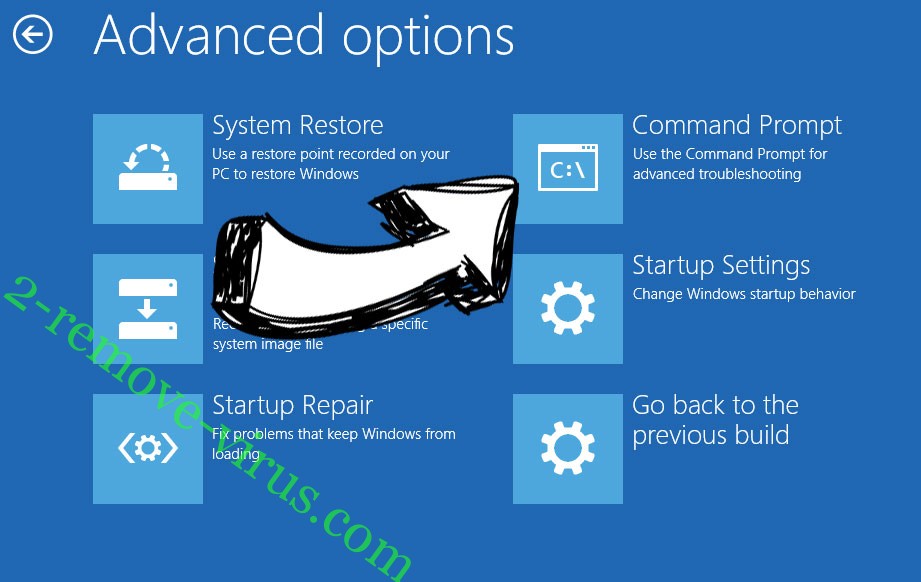
- In Command Prompt, input cd restore and tap Enter.


- Type in rstrui.exe and tap Enter again.


- Click Next in the new System Restore window.

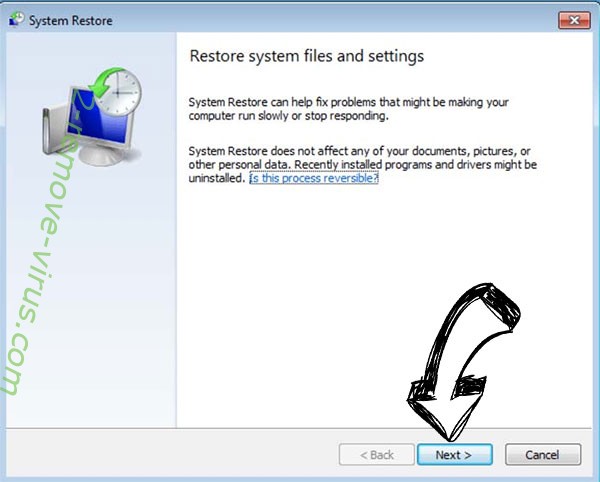
- Choose the restore point prior to the infection.


- Click Next and then click Yes to restore your system.


Site Disclaimer
2-remove-virus.com is not sponsored, owned, affiliated, or linked to malware developers or distributors that are referenced in this article. The article does not promote or endorse any type of malware. We aim at providing useful information that will help computer users to detect and eliminate the unwanted malicious programs from their computers. This can be done manually by following the instructions presented in the article or automatically by implementing the suggested anti-malware tools.
The article is only meant to be used for educational purposes. If you follow the instructions given in the article, you agree to be contracted by the disclaimer. We do not guarantee that the artcile will present you with a solution that removes the malign threats completely. Malware changes constantly, which is why, in some cases, it may be difficult to clean the computer fully by using only the manual removal instructions.
